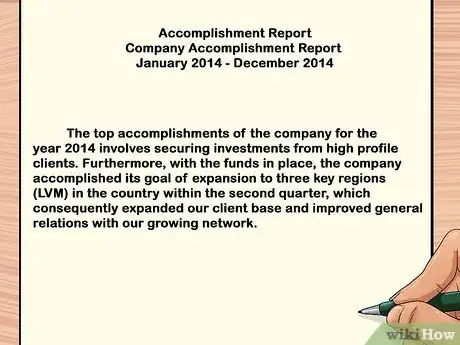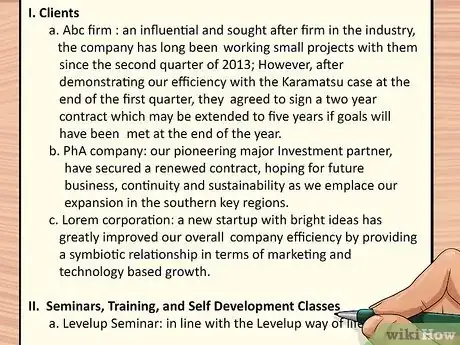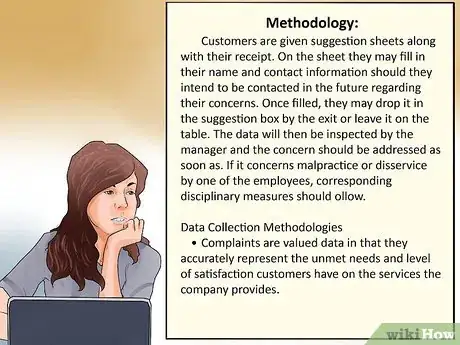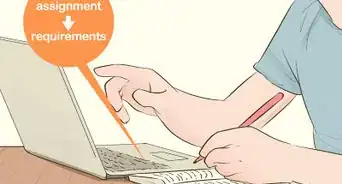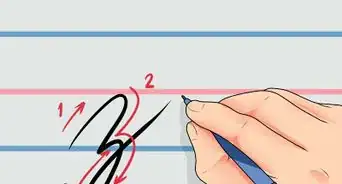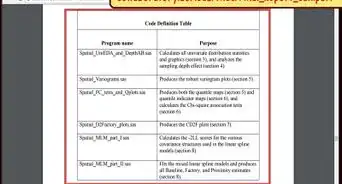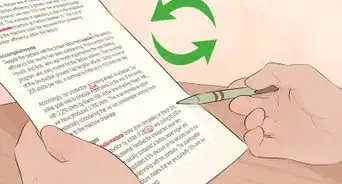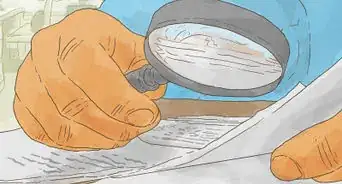This article was co-authored by Meredith Walters, MBA. Meredith Walters is a Certified Career Coach who helps people develop the skills they need to find meaningful, fulfilling work. Meredith has over eight years of career and life coaching experience, including conducting training at Emory University's Goizueta School of Business and the US Peace Corps. She is a former Member of the Board of Directors of ICF-Georgia. She earned her coaching credentials from New Ventures West and a Master of Business Administration from the University of San Francisco.
There are 7 references cited in this article, which can be found at the bottom of the page.
This article has been viewed 729,686 times.
Do you need to write an accomplishment report? Many jobs will require one, and often these are self-assessments in which you're asked to report what you've done throughout the year. Perhaps you've been tasked with writing a report on a meeting instead. Understanding how to write such a report well can make a big difference in whether you are perceived as a success or not.
Steps
Template of an Accomplishment Report
How to Format the Accomplishment Report
-
1Open with a summary paragraph. At the top of the accomplishment report, summarize the overview. Tell the readers the overall achievements.
- Perhaps you are writing an accomplishment report for a non-profit organization. You could summarize successes, such as the fact you organized events that benefit stakeholders, gained industry recognition, and created linkages with partners.[1]
- You don’t need to bog the summary paragraph down with too many specifics. You are summarizing the key points here. You are providing the overview. Try not to make the report too long. Two pages is a good rule of thumb, unless the employer has a specific suggestion. Check with the employer to see if there is a recommended format.
-
2Provide details to back up each summary point. Now you need to back up the key points in the opening summary with specifics further down in the report.
- Use outline form. Organize different areas into their own sections and use sub-points beneath each header. For example, perhaps one of your sections is “events organized and held.”
- Under such a header, you could list (with bullets or letters) a brief summary paragraph of each event held, its purpose, and how it advanced the group’s mission. Be specific here.
Advertisement -
3Use professional formatting. Don’t just whip the report together. You want the report to look organized, in a professional font, and on nice paper.
- Create a title, and center it at the top of the page. Use bold subheads to organize information.
- At the top of the report, provide the basics. Present the dates that are covered by the accomplishment report and the name and title of the person who prepared it.[2]
-
4Keep a journal throughout the time period in question. It will be a lot easier if you gather accomplishments as they happen.
- Keep a journal or folder in which you track accomplishments throughout the time period of study. This will make your life a lot easier when it’s time to sit down and write.[3]
- If you don’t do this, you may find yourself forgetting important accomplishments that happened toward the beginning of the time period.
How to Create Strong Content
-
1Remind people of your performance goals and expectations. You should remind people what the goals were at the beginning of the time period being studied. What were the objectives? What are the expectations of the job? If you don’t know, get your employer to provide them.
- Then, explain how those were met with actual numbers. The point is to compare what your activities or results were against original projects.
- For example, if you raised more money than projected, this will seem positive to investors or superiors. However, if you don’t provide the benchmark, it’s harder to assess whether it’s a success and to what degree.
-
2Provide visuals. Include a few charts or graphs if you think they will help the reader visualize the data you are presenting.
- Remember that some of the report readers are going to only scan it because they are probably busy. So visual aids can get your point across more effectively sometimes.
- Don't inundate the reader with too many graphs though. Select 1 or 2 that emphasize the key points.
-
3Focus on CAR. This technique helps you document your accomplishment. It stands for Challenge. Action. Results. This will help you organize your accomplishments.
- Figure out the challenge of the job. Then outline the action you have taken to address it. And then document your results. For example, let's say you are a manager in a restaurant. You could write: Challenge: Lines were becoming too long during dinner rush hour, with customer complaints increasing by 10 percent. Action: Push back 1 waitress' start time by 1 hour to increase support staff during rush hour. Result: Customer complaints about wait times dropped to 2, an 80 percent decline.
- The key point is to be specific here. General accomplishments such as “I am a team player” aren’t as meaningful because anyone can say things like that. The key is to connect results to core issues and to demonstrate success through data and specifics.[4]
-
4Present your methodology. If your program involved some kind of data collection, it’s a good idea to briefly explain the methodology that you used in doing so.
- Let the readers know the rationale for the chosen survey methodology. Explain the benefits and results of the survey. Why was this a credible method? For example, using the restaurant scenario, explain why it makes sense to use complaints as a methodology.[5]
- Explain the survey dates and what you were trying to accomplish with the survey.[6]
-
5Focus on your accomplishments. To narrow down the accomplishments you want to present, think about what made you proudest during the time period. Maybe it was calming anxious visitors. Maybe it was coaching others. Don't just throw too many details at readers.[7]
- Another method you can use to do this is the STAR method. This method involves briefly describing a situation and task, the action you took to accomplish it, and the results you achieved. As with the CAR method, the goal here is to link problems with results and to explain how you reached them.
- Focus on such things are degree of difficulty, one of a kind, first-time, high-visibility, meeting deadlines, innovation, and your work’s scope and impact.
- An example would be to explain that when you started as the branch manager, annual employee turnover was at 35 percent. You implemented an employee satisfaction survey, established mentorship for workers, and started a weekly staff meeting. As a result, employee turnover had dropped to 15 percent. As this example shows, the accomplishments don’t have to be excessively wordy as long as they provide the correct linkages.
-
6Explain your value. Don’t just say what your results are. You need to also explain why those accomplishments have value to your organization.
- For example, let’s say you started holding staff meetings. So what? What value did that create for the organization? Think it through. If there is no concrete value, maybe you should highlight something else.
- If staff meetings helped increase worker morale as evidenced in a decline in sick days, which saved the employer money, then you’ve demonstrated value.
-
7Proofread the report before submitting it. You’re defeating the purpose of an accomplishment report if you turn in something tossed together and unprofessional.
- Proofread the report for grammar, punctuation, and spelling errors. Set it down for the night, and read it again in the morning. Don’t write the report at the last minute.
- Print out a hard copy, and check that for proofing errors. Sometimes a person’s eyes get wedding to the computer screen to the degree that they skip over obvious errors.
How to Use Effective Language
-
1Address any negatives in a positive fashion. If there is something that you didn’t meet expectations on, it’s better not to dodge it. Don’t make it the central focus of the report, but do address it.
- Handle the areas where you didn’t do so well with positive language. For example, focus on the concrete steps that you are taking to address the issue, rather than focusing on blame or excuses.
- Don’t blame others in an accomplishment report. Stay focused on what you’ve done. Stay positive. Focus on the things that you or your group did well. Single out areas that you can tout.
-
2Use numbers and metrics. If you can be very specific, your responses will seem more credible. Whenever possible, back up what you say with something measurable.
- Generic superlatives like “outstanding” or “dependable” aren’t very meaningful. Telling someone “I had an excellent year” is something that anyone can say.
- Remember this phrase: Show don’t tell. Rather than telling people you had an excellent year, show them, through details and metrics, what you did that was excellent. Instead of saying you’re good at customer relations, cite the results of customer-satisfaction surveys, letters you received and lack of customer complaints.
- Use numbers. Saying you handled a large staff doesn’t mean much if we don’t know how large it was. Use numbers to express the size of a budget and to outline the scope of duties.
-
3Tell the truth in all cases. Do not exaggerate. Do not lie. If you’re caught doing it, you could get in big trouble.
- The other problem with lying, even through obvious omission, is that you’re not going to end up being confident in the end, and you won’t be able to improve.
- Rather, do an honest assessment of the time period at hand, both weaknesses as well as positives. Address the weaknesses. Just find a positive way to do it.
-
4Recognize others. Many business and technical writing classes suggest that you not use the pronoun “I.” You can do this in some cases in an accomplishment report though.
- For example, you may want to say “I hired 100 people.” However, don’t forget the other people who contributed to the successes. Refer to the team when applicable.
- You will gain points by seeming like you’re not arrogant. Vary sentence structure so every sentence doesn’t start with the word “I.”
Expert Q&A
Did you know you can get expert answers for this article?
Unlock expert answers by supporting wikiHow
-
QuestionWhat should I focus on if I'm writing about my accomplishments to ask for a raise?
 Meredith Walters, MBAMeredith Walters is a Certified Career Coach who helps people develop the skills they need to find meaningful, fulfilling work. Meredith has over eight years of career and life coaching experience, including conducting training at Emory University's Goizueta School of Business and the US Peace Corps. She is a former Member of the Board of Directors of ICF-Georgia. She earned her coaching credentials from New Ventures West and a Master of Business Administration from the University of San Francisco.
Meredith Walters, MBAMeredith Walters is a Certified Career Coach who helps people develop the skills they need to find meaningful, fulfilling work. Meredith has over eight years of career and life coaching experience, including conducting training at Emory University's Goizueta School of Business and the US Peace Corps. She is a former Member of the Board of Directors of ICF-Georgia. She earned her coaching credentials from New Ventures West and a Master of Business Administration from the University of San Francisco.
Certified Career Coach If you're writing a letter or email to ask for a formal raise, emphasize accomplishments where you went above and beyond your job description. If you've accomplished anything outside the scope of your standard responsibilities, it demonstrates that you're capable of handling more at work and you deserve a raise. Try to be concrete about your accomplishments as well. Include any statistics or data that proves you're performing well.
If you're writing a letter or email to ask for a formal raise, emphasize accomplishments where you went above and beyond your job description. If you've accomplished anything outside the scope of your standard responsibilities, it demonstrates that you're capable of handling more at work and you deserve a raise. Try to be concrete about your accomplishments as well. Include any statistics or data that proves you're performing well. -
QuestionHow should I do a report on a community meeting?
 Community AnswerHandle this the same way you would handle any meeting. Obtain the agenda first, if there is one. Take detailed notes. Focus on writing down the end result. What's decided? What's accomplished? Make sure you figure out who the players are too.
Community AnswerHandle this the same way you would handle any meeting. Obtain the agenda first, if there is one. Take detailed notes. Focus on writing down the end result. What's decided? What's accomplished? Make sure you figure out who the players are too. -
QuestionWhat should I start with?
 Community AnswerWrite a summary. As for which accomplishment you should start with, figure out which accomplishment had the most measurable value for your organization. And start with that one.
Community AnswerWrite a summary. As for which accomplishment you should start with, figure out which accomplishment had the most measurable value for your organization. And start with that one.
References
- ↑ http://www.slideshare.net/xicowner/accomplishment-report?related=1
- ↑ https://www.examples.com/business/report/accomplishment-report.html
- ↑ http://idealistcareers.org/are-you-keeping-track-of-your-accomplishments-at-work/
- ↑ http://www.slideshare.net/ctccareer/how-to-write-job-accomplishments
- ↑ http://image.slidesharecdn.com/howtowritejobaccomplishments-121022091456-phpapp02/95/how-to-write-job-accomplishments-1-638.jpg?cb=1350897343
- ↑ https://www.govloop.com/community/blog/accomplishment-reports-ready/
- ↑ http://www.dm.usda.gov/employ/employeerelations/docs/PerfAccomplishmentsSelfAssessment.pdf
About This Article
To write an accomplishment report, start by centering the title, the dates the report covers, and your name and title at the top of the page. Below that, include a summary paragraph that outlines any major successes and achievements that will be discussed in the report. As you're writing the rest of the report, break up the information with bold subheads so it's easy for people to read. Remember to use a professional font so your report looks clean and organized. For tips on creating strong content to go in your report, scroll down!

